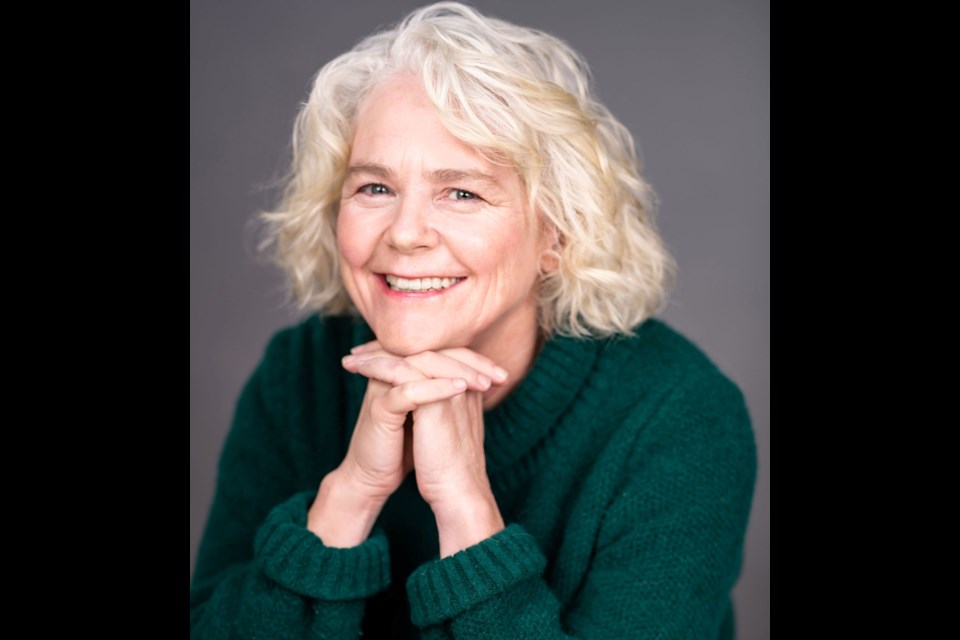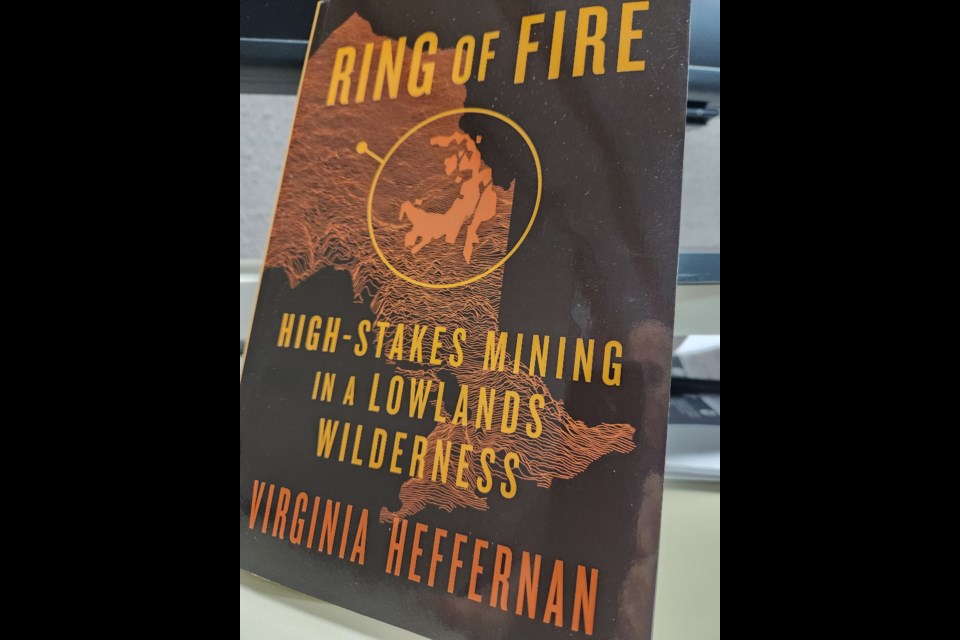The author of a new book about Northwestern Ontario's Ring of Fire mineral zone believes a way can be found to overcome the obstacles that prevent its development.
Virginia Heffernan feels no mine can be constructed without First Nations having a stake in it and unless the necessary measures are taken to protect the delicate environment of the James Bay Lowlands.
But in Ring of Fire – High Stakes Mining in a Lowlands Wilderness – the exploration geo-scientist turned mining journalist writes that she doesn't think sustainable development is necessarily "an oxymoron in this fragile land."
Heffernan has a degree in geology, worked in the field in Northern Ontario and Africa, and turned to writing for The Northern Miner before becoming a freelance writer covering mineral exploration projects.
In an interview, she said the Ring of Fire had been on her mind since the discovery of the high-grade Eagle's Nest nickle-copper-platinum-palladium deposit in 2007.
She'd been following developments in the area, while not writing about them so much, but her interest rose as First Nations started to win court decisions over the duty to consult and accommodate.
"As we started to talk about critical metals and how important they are to the green revolution, then it became even more intriguing. So I thought, okay, this is not a magazine article, this is a book."
Heffernan's research for the book included a 10-day canoe trip on the Missinaibi and Moose Rivers to James Bay.
She initially planned to spend some time with the people living in the communities in the James Bay Lowlands to get their perspectives, but First Nations were shut down because of the COVID pandemic.
As an alternative, she opted to try to at least get a sense of the landscape by paddling through it.
"I was a bit surprised at how important the peatlands are up there. That's 320,000 square kilometres, which is a huge store of carbon, a globally significant store of carbon. It also sequesters it. That was a real eye-opener for me, because in the early days of the discovery all you would hear is that it's just a big swamp, nobody lives up there, and it really doesn't matter."
Heffernan said as her research went on she learned more about the peatlands.
"We have to be careful how we mine up there, because we can't just go in and start digging open pits," she said.
The author said the few books written about the mining industry tend to be written by people involved in the industry themselves.
"And so they tend to be pro-mining and not look at all the other aspects of communities, the environment, how these mines change people's lives, sometimes for the better and sometimes for the worse."
She took on the task, she said, with no conscious bias, but conceded that she "must have had" an unconscious bias simply from having written about the industry for so long as a journalist.
"But I did try to take more of a balanced view of why some of the First Nations are opposed, what is it up there that is so ecologically important, and try to research that."
Heffernan hopes readers of the book find that it's more balanced than they might have expected.
"The First Nations consider themselves the custodians of the land up there. If they can be part of the development, I think it can be done in a much more measured way than it has in the past. You just don't allow the mines that will have a huge environmental impact...I think it's a real opportunity to bring First Nations into revenue-sharing, into making decisions about which mines go ahead and which do not," she said.
"It's not just about the money. It's about preserving the environment as much as possible, and also bringing some revenue into those communities that so desperately need it. This is a huge opportunity to get it right...to start from scratch and re-visit the way that we do our resource development in Canada. I think the Ring of Fire could become a real global model of sustainable resource development."
Former Ontario premier Kathleen Wynne has said anyone interested in the relationship between Indigenous and non-Indigenous people in Ontario, or the economy and ecology of the North, or the volatility of the mining industry, should read Heffernan's book.
"Policymakers at all levels of government would do well to listen to Heffernan’s advice,” Wynne suggested.
The 224-page paperback is published by ECW Press.





(1).png;w=120;h=80;mode=crop)
